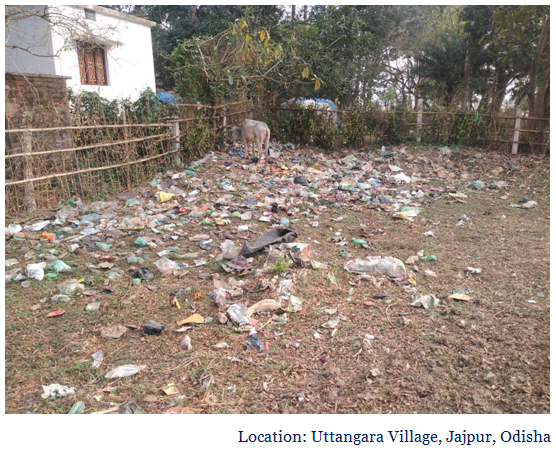Diffusion of plastic waste management policy key to far-reaching transformation

Given the socio-ecological, environmental, and economic imperatives of plastic waste management, the Indian government introduced the policy of extended producer responsibility (EPR) through Plastic Waste Management Rules, 2016. The policy extends the responsibility of collection and recycling or co-processing of plastic waste from local bodies to large producers, importers, and brand owners (PIBOs) who use plastic packaging to sell products. This is a transformative policy change, which expands the canvas of waste management and brings multiple stakeholders into its fold.
The rules are envisioned to promote the development of a supply chain for plastic waste. It mandates PIBOs to collect and recycle plastic packaging quantitatively equivalent to what was introduced in the domestic markets, as co-flows of sold products. Policy shifts are characterized by challenges to implementation. The Indian government by taking recourse to proactive amendments in the rules and procedures, has been navigating the transformative route, effectively. Less than 80% of the 3.4 million tonnes of plastic waste generated annually, can be addressed by the policy. What about the residual 800,000 tonnes and the legacy waste? While the supply chain of polyethylene terephthalate (PET, to most readers) is entrenched, there are other types of lightweight, environmentally detrimental plastics, diffused in the anthroposphere, that need urgent attention.
While the EPR policy is iteratively maturing, some more thoughtful inclusions will take it even further. First and foremost, the responsibility-sharing stakeholder base must be expanded. Micro- small- and medium enterprises (MSME), in their capacities as brand owners and importers consuming less than 1 tonne of plastic packaging annually, are exempted. The MSME sector’s entities, while being key nodes in the supply chains of the larger manufacturers, contribute close to 50% of the manufacturing sector’s output. The allocation of responsibility for the plastic waste generated from a product is complex, given the vastly diversified supply chains. This is where life cycle thinking becomes indispensable – to trace the flows of plastics in the technosphere. Seamless inclusion of the MSMEs and the smaller importers within the ambit of the EPR can be accomplished by recognizing shared responsibility agreements with proportionate financial contributions among the participating stakeholders, which will facilitate the entrenchment of robust and relatively costlier plastic-recycling pathways, and help EPR credit trading.
Another challenge is the end-of-life management of plastic waste in India’s villages. The rural populace, courtesy of economic development, is inching closer to the consumption footprints of their urban counterparts. Training the lens on rural India reveals that a paucity of a waste-recycling supply chain, and high reverse-logistics expenses, are obstacles to be surmounted if the government wishes to give a fillip to rural tourism for sustainable development and empower local communities. EPR policy can generate among producers, an interest in waste management in villages, by offering differential EPR credits between urban and rural regions. The latter, while being slightly unattractive from an economic feasibility point-of-view, will uncover higher socio-environmental benefits, and thereby justify the higher EPR credits. Collection and management of plastic waste in villages can be an important indicator to monitor the performance and assess the success of the policy.
Different options for plastic recycling/re-processing incur different expenditures and offer varying environmental benefits. Incinerating plastic in cement kilns is a low-cost option with low environmental benefits, vis-à-vis grade-wise segregation of plastic waste, followed by repurposing to plastic boards or other value-added products. It follows that the EPR credits cannot be decided by adopting a ‘one-size-fits-all’ approach. They must factor in the life-cycle socio-environmental impacts of plastic recycling pathways adopted by the PIBOs.
In addition to tightening the regulatory targets for plastic waste management, to address concerns related to legacy waste, the government can proactively enhance the attractiveness of the policy and the participation of stakeholders. Top-down confidence-building measures to elicit cooperation from industries, guaranteeing protection of data shared by firms for EPR credits, enabling infrastructure and fiscal instruments to sustain the supply chain for lightweight post-consumer plastic waste, capacity-building of gram panchayats, and standardizing procedures across the country, are some initiatives which will support the said enhancement.

